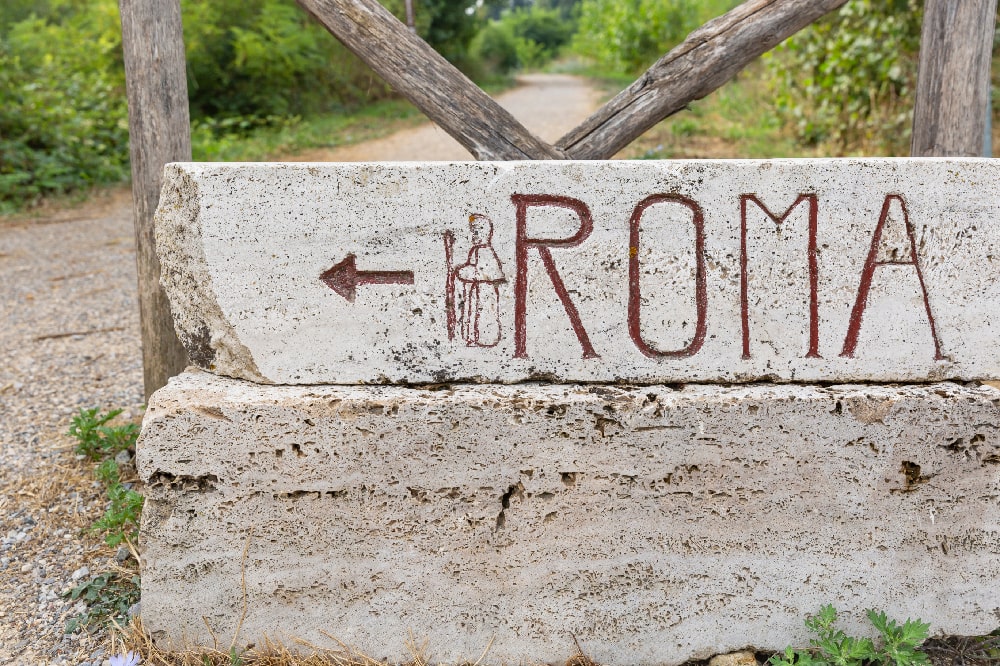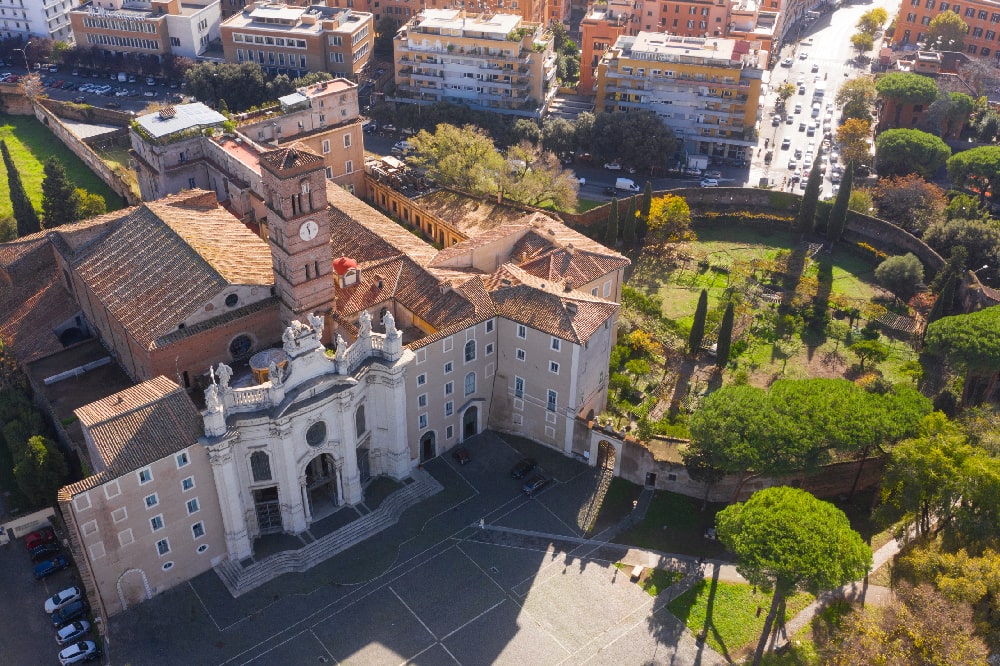Saint Therese of Lisieux, who died at the age of twenty-five, after having spent much of her life in seclusion, left us a unique model of spirituality and an example that is still followed throughout the world.
Contents
What makes a saint so special? A definition is difficult to summarize in a few lines, without falling into banality, or even error. By consulting any dictionary we will read that, within the Catholic Church, “holy” is a man or a woman who has been able to live by the example of Jesus and who during his life has demonstrated Christian virtues to the point of cancelling or even sacrificing his life in the name of his faith. What exceptional men and women these saints must be, almost heroes! Then we think of Saint Therese of Lisieux, a girl born and raised in Normandy, in a family like many, entered very young among the Carmelites and died just twenty-five years. How can this young woman have demonstrated so many qualities to justify her consecration, especially the great veneration of which she is still the subject?
But there is more.
Saint Therese of Lisieux is not a simple saint. She is venerated as the patron saint of the missionaries and one of France’s patron saints with Saint Anne, the mother of the Virgin Mary, and Joan of Arc. Moreover, since 1997 she has been the third woman to be proclaimed a Doctor of the Church, together with Caterina da Siena and Teresa d’Avila, a title attributed only to those who have shown exceptional enlightenment and theological sensitivity in their writings, but above all in life.
What makes this girl so special? Let’s find out together.
The story of Saint Therese of Lisieux
The story of Saint Therese of the Child Jesus, or Therese of the Child Jesus and the Holy Face, does not seem like an exceptional woman’s story. Born in the bosom of a loving and very devout family, she suffered from a small loss and mourning, first of all, that of her mother, who left her when she was just four years old. Nevertheless, she grew up surrounded by the love of her father and four sisters, showing an unusual love for Jesus from an early age.
Born in Alençon, Normandy, in 1873, she moved to Lisieux after the death of her mother. Here she was educated by the Benedictine nuns, showing her shy nature, melancholy and little brought to collective life. When her older sister Pauline decided to enter the Carmelite order, Teresa also felt that she could be happy as a nun. After a terrible illness, which she healed thanks to the prayers addressed to the Virgin Mary, the little girl received her First Communion, which confirmed her intention to dedicate her life to Jesus.
But she will have to wait and face the perplexities of relatives, concerned about her young age and poor health. She eventually went on a pilgrimage to Rome, begging Pope Leo XIII to allow her to take her vows. Just fifteen years old, she entered the same monastery where two of her sisters already live and after the period of postulate and novitiate at seventeen and a half, she made her solemn vows and took the religious name of Therese of the Child Jesus and the Holy Face.

Therese died on 30 September 1897 without ever leaving the monastery. Her last words were: “My God, I love you.” In the few years she spent among the sisters she wrote an autobiographical work, the Story of a Soul, still today one of the fundamental texts of universal spirituality, as well as numerous poems, plays, prayers and letters. She was canonized in 1925 by Pope Pius XI.
The theology of the “little way”
But what do the works left by Saint Therese talk about? It is essential to understand what her doctrine consisted of since it is precisely in it that lies the ultimate reason for her holiness. As we have already mentioned since she was a child, Therese showed a surprising propensity to love Jesus. This love will be the heart of Therese’s theological and literary work, the search for holiness in the small daily gestures, even those seemingly most insignificant, but which become immense if carried out in the name of love for God. No act of heroism, no dramatic action. Saint Therese followed what she herself had called the “little way“. In her feeling small and inadequate, in her daily awareness of her limitations, she realized the enormity of God’s love, to which we can do nothing but entrust ourselves as children, in absolute trust and innocence. The smaller we feel before God, the more he will love us, because his nature leads him to bend down to all that is small and in need of love. This is why Saint Therese signed her letters adding to her name the title “the little one”.
In this perspective, abandonment to God coincides with our not feeling anything, with constantly living the awareness of our poverty, smallness. This inadequacy, this sense of inner emptiness is thus filled with the fullness of God’s love. It is a revolutionary concept because it justifies every fault, every weakness, even sin, which in this way they become only other ways to bring man, by his nature small and imperfect, to God.
Not only that, but those who surrender to their smallness and let God’s love invest in them, raising them above their human limits, also drag with them those who love, in a kind of communion of love, a meeting of souls that embraces the whole church, like a big family.
In this praise to smallness lies the greatness of Saint Therese of the Child Jesus. Pius X, who called her Star of my Pontificate or even My little Saint, said that although there was nothing extraordinary in her, her extreme simplicity was the most extraordinary and worthy of attention that distinguished her soul. And speaking of his most famous work, Story of a Soul, Benedict XVI said: “Story of a Soul is a wonderful story of Love, told with such authenticity, simplicity and freshness that the reader cannot fail to be fascinated!”
Saint Therese of Lisieux Doctor of the Church
It was John Paul II in 1997 who proclaimed Saint Therese Doctor of the Church, on the centenary of her death. And this although Therese had not been able to attend university, nor to conduct regular studies. But she knew how to live her vocation by making her own the commandment of love in such a full and total way, living of prayer and communion and providing an incomparable example. For this reason too, she is venerated as the patron saint of missionaries, although she was never given the opportunity to work in the missions.
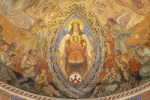
Doctors of the Church: who are they and what are the requirements for having this title
On 1 October we celebrate Saint Therese of Lisieux, one of the four women proclaimed Doctors of the Church…
Saint Therese of the Child Jesus and of the Holy Face deserved the title of Doctor of the Church despite being only a woman, who died so young, and despite being a contemplative character and life, certainly not a heroine or a person of action. But her spiritual journey was so innovative and mature, her writings so rich in intuitions of faith so vast and deep, as to make a reference also for intellectuals and men of thought and spirit much more famous and great.
Meaning of the name Therese
The name Therese comes from Greek and means “hunter“. Made famous by Therese D’Avila, patron saint of Naples, and Therese of Lisieux, but also by Mother Therese of Calcutta, in more recent times, it is a name that preserves a sour and at the same time very sweet note. The name day falls on October 15 (memory of Saint Therese D’Avila), October 1 or 3 (memory of Saint Therese of Lisieux or the Child Jesus).
Saint Therese of Lisieux Novena of roses
The Novena of the roses of Saint Therese of the Child Jesus draws inspiration from the words spoken by Saint Therese herself, who prophesied her own death and announced: “You will see at the moment of my death that cascade of roses I will make rain on the earth.” Often the iconography shows us Saint Therese with hands full of roses, which symbolize the graces she dispensed in life and even after her death.
In 1925, a Jesuit named Father Putigan began to recite a novena to invoke an important grace, and asked God as a sign of benevolence and a guarantee, a rose. He obtained it on the third day, and with it the grace, and so he began another novena and asked for another rose. Thus was born the miraculous novena of roses, which today is practised everywhere in the world. It can be recited at any time, but Saint Therese devotees usually choose to recite it from the 9th to the 17th of each month.
Most Holy Trinity, Father, Son and Holy Spirit, I thank you for all the favours and graces which you have enriched the soul of your servant Saint Therese of the Child Jesus and of the Holy Face, Doctor of the Church, during her twenty-four years spent on this earth. For its merits grant me the grace that ardently I desire (the desired grace is pronounced here), if it is conformed to Your holy wish and for the good of my soul.
Help my faith and my hope, O Saint Therese of the Child Jesus and of the Holy Face. Fulfil once again your promise to spend your heaven “doing good on earth”, allowing me to receive a rose as a sign of the grace I desire to obtain.
We then recite 24 Gloria, in thanksgiving to God for the gifts granted to Therese in the twenty-four years of her earthly life.
Every Glory is followed by the invocation:
Saint Therese of the Child Jesus and of the Holy Face, pray for us.
Saint Therese of the Child Jesus, who during your earthly life loved God above all things and offered herself as a victim to His merciful love, help me to make precious all the moments of my life, transforming them into acts of true love.
Allow me to follow your little way, that is, to live in the spirit of evangelical simplicity and humility, in total abandonment to the will of the Lord.
Teach me to accept every suffering as a precious gift to those who love the most.
May I too close my earthly life by repeating your last words: My God, I love you.

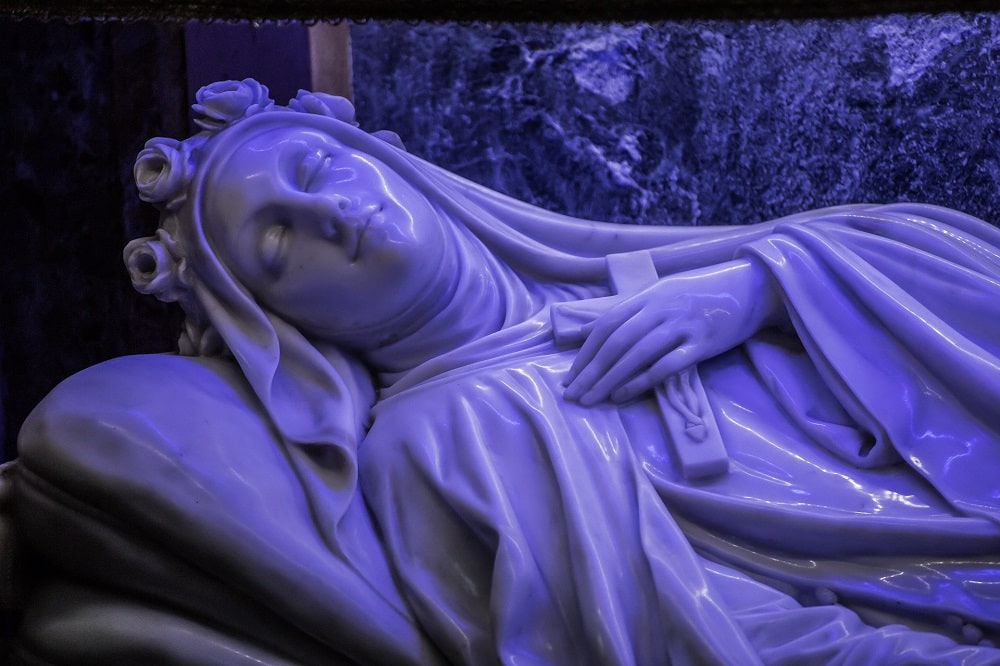
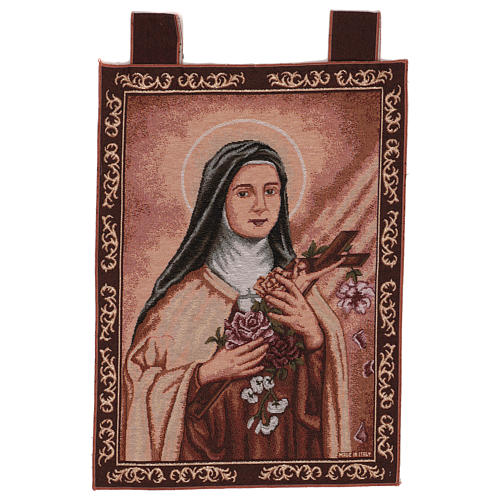

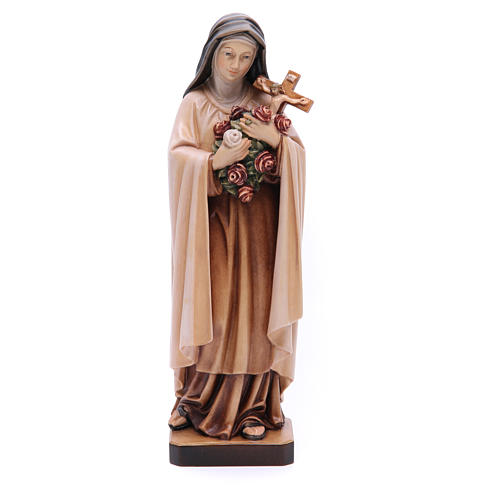
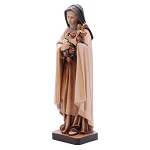


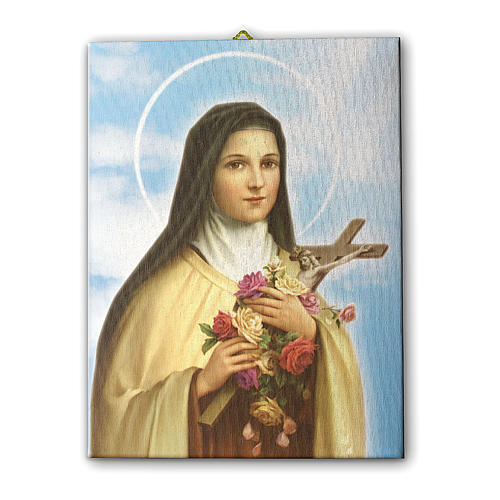

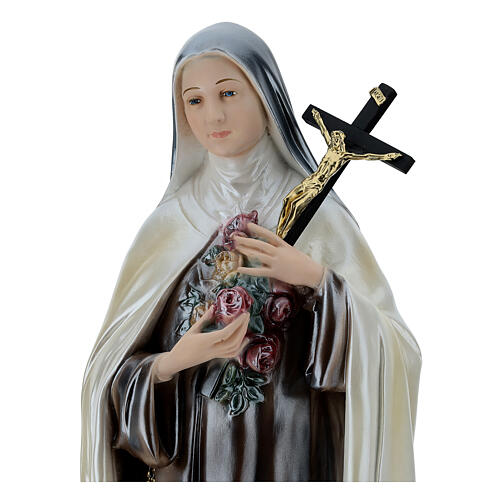
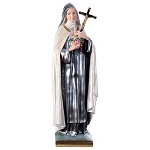
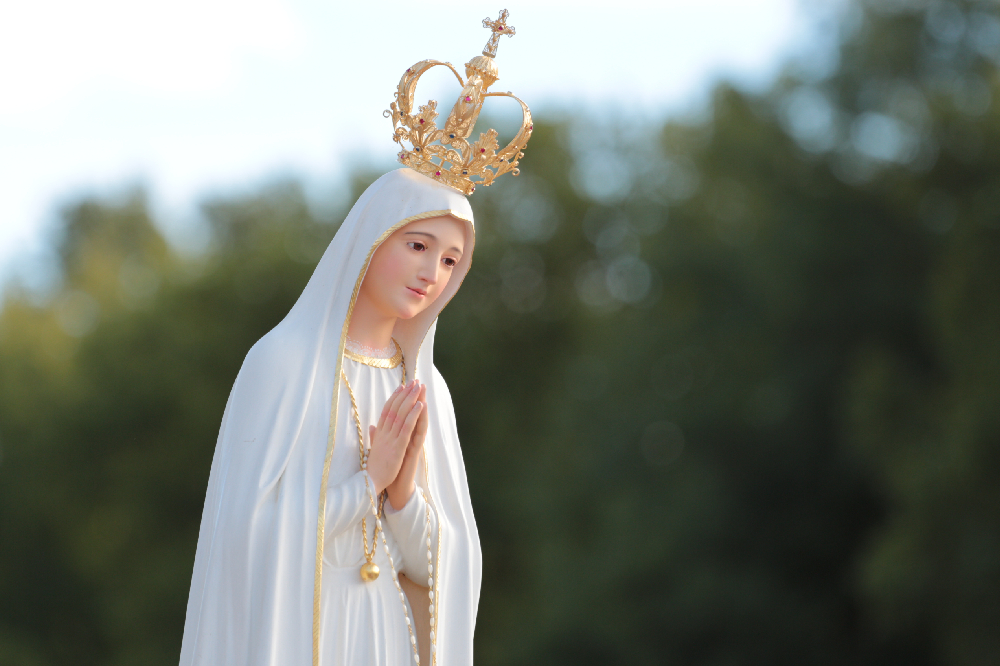

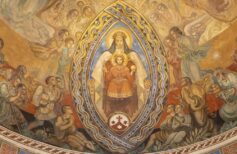



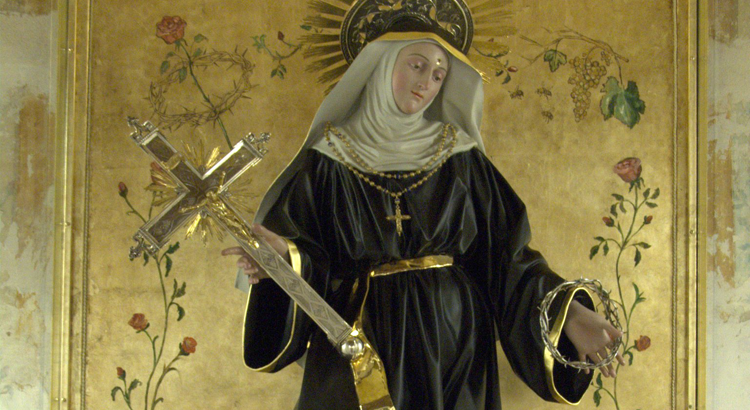









 5 June 2024
5 June 2024
